The CycleRAP methodology can be utilized to understand the level of safety of the cycling infrastructure a different level, from analyzing a specific section of the facility (for example, the cycle path in a tunnel) to a characterization of a larger network. This study was proposed to analyse characteristics of different typologies of the cycling infrastructure in the Barcelona Metropolitan Area, understanding what are the ”pains” that can be found along different parts of the city to suggest prioritised countermeasures to improve safety. There was a total of 84.6km of assessed cycling infrastructure divided into 13 routes with a total of 5427 sections.
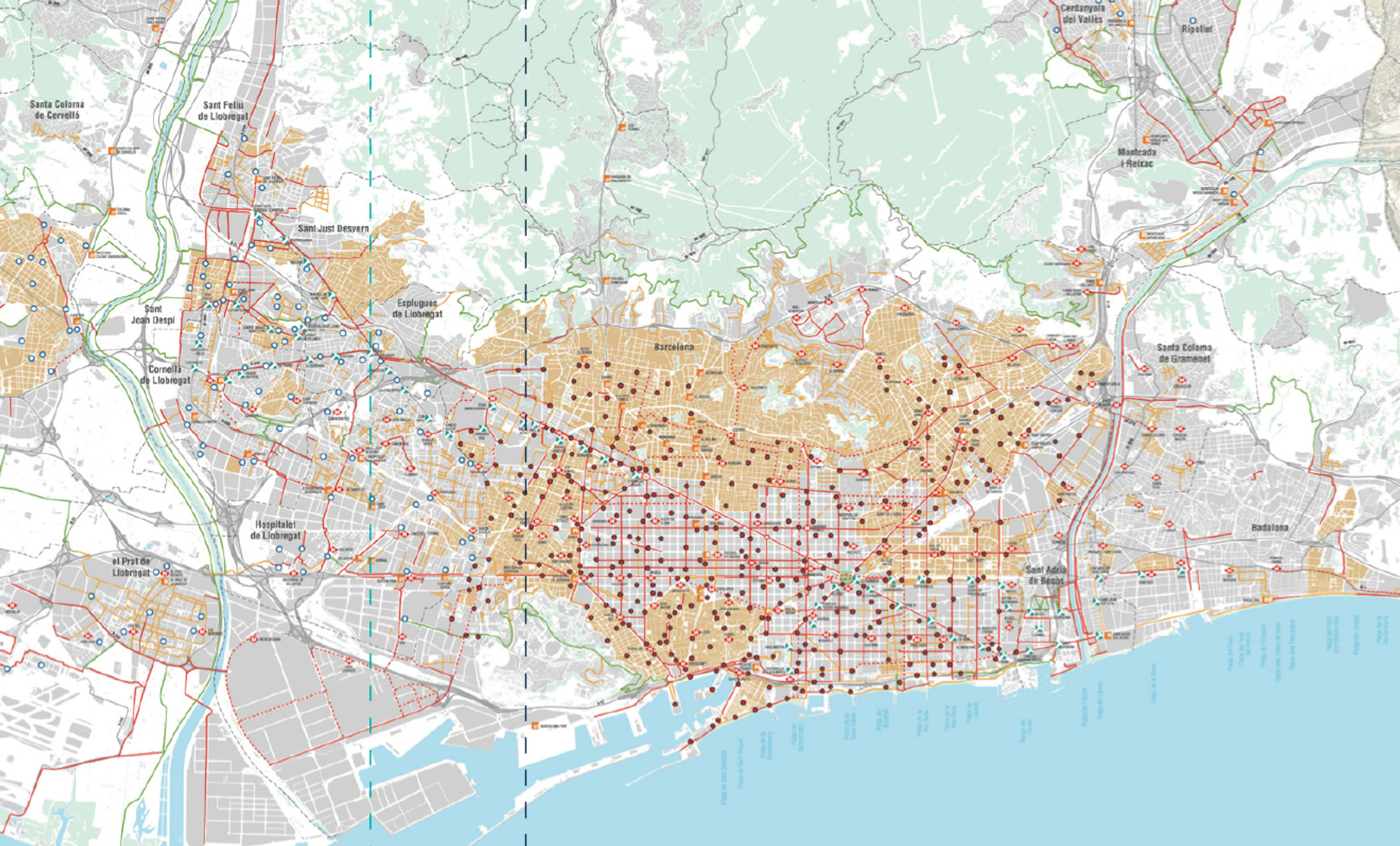
Barcelona’s metropolitan area, which spans 635.4 km2, is home to more than 3 million people. The Barcelona Metropolitan Area Authority (AMB) integrates the management of metropolitan mobility policies, and is responsible for the Metropolitan Urban Mobility Plan 2019-2024 (PMMU). Barcelona’s metropolitan area has an extensive network of bike lanes, greenways and traffic-calmed roads. Barcelona aims to increase the share of trips being done by bicycle, and further expand its network of cycling infrastructure.
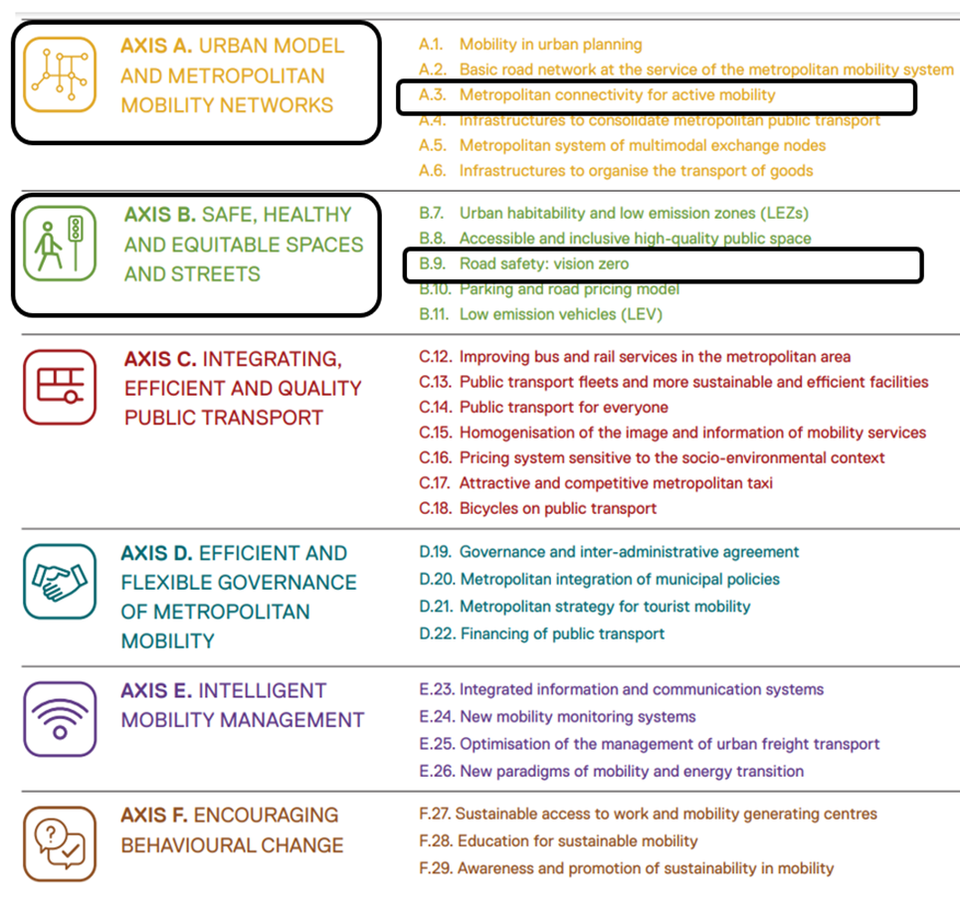
Using Lane Patrol 54km of cycling facilities were assessed in Barcelona to assess the metropolitan connections and identify the level of safety of the missing connections. The surveys were done by Factual Consulting, a licensed CycleRAP supplier, using the Lane Patrol Mobile App and the assessment was done on the Lane Patrol web app.
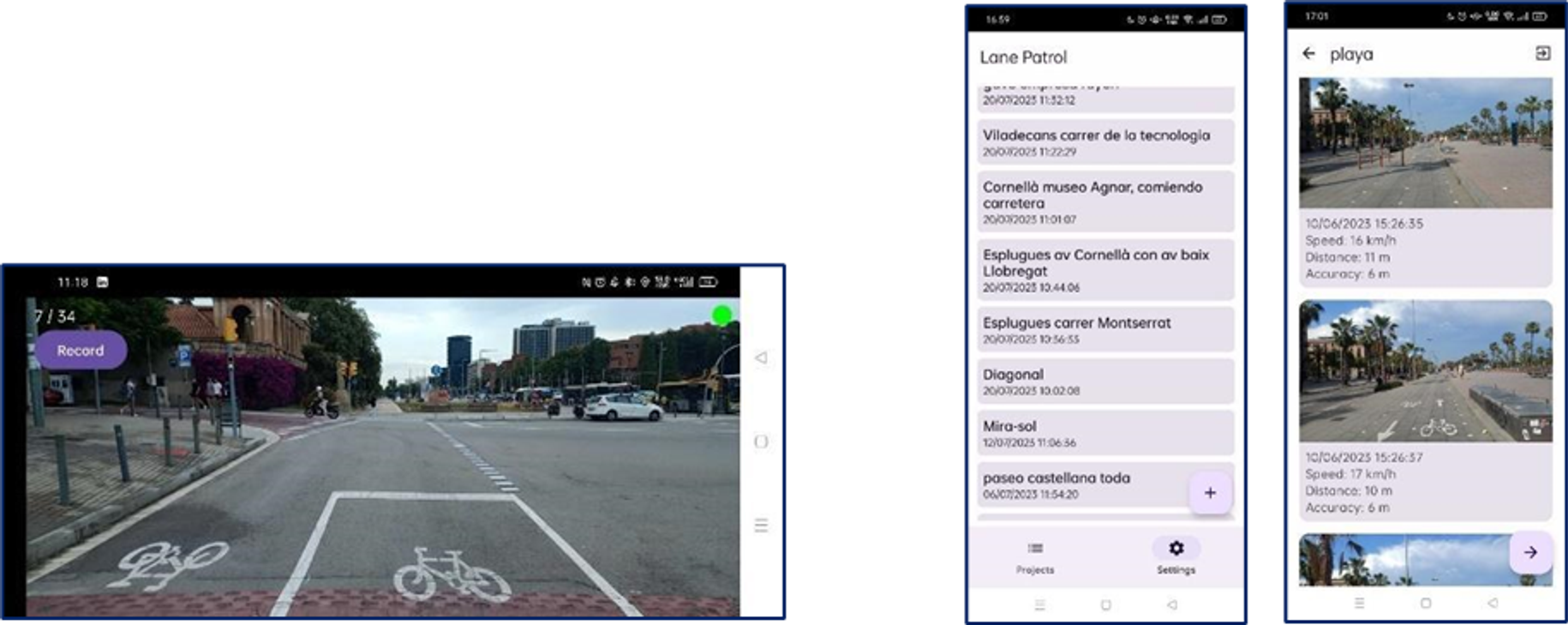
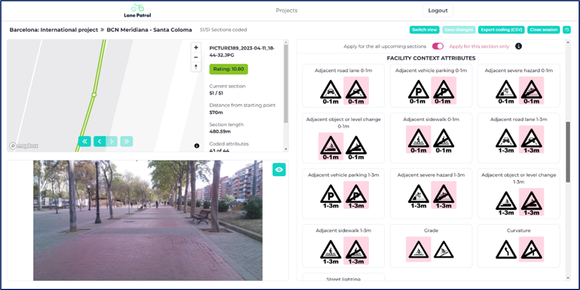
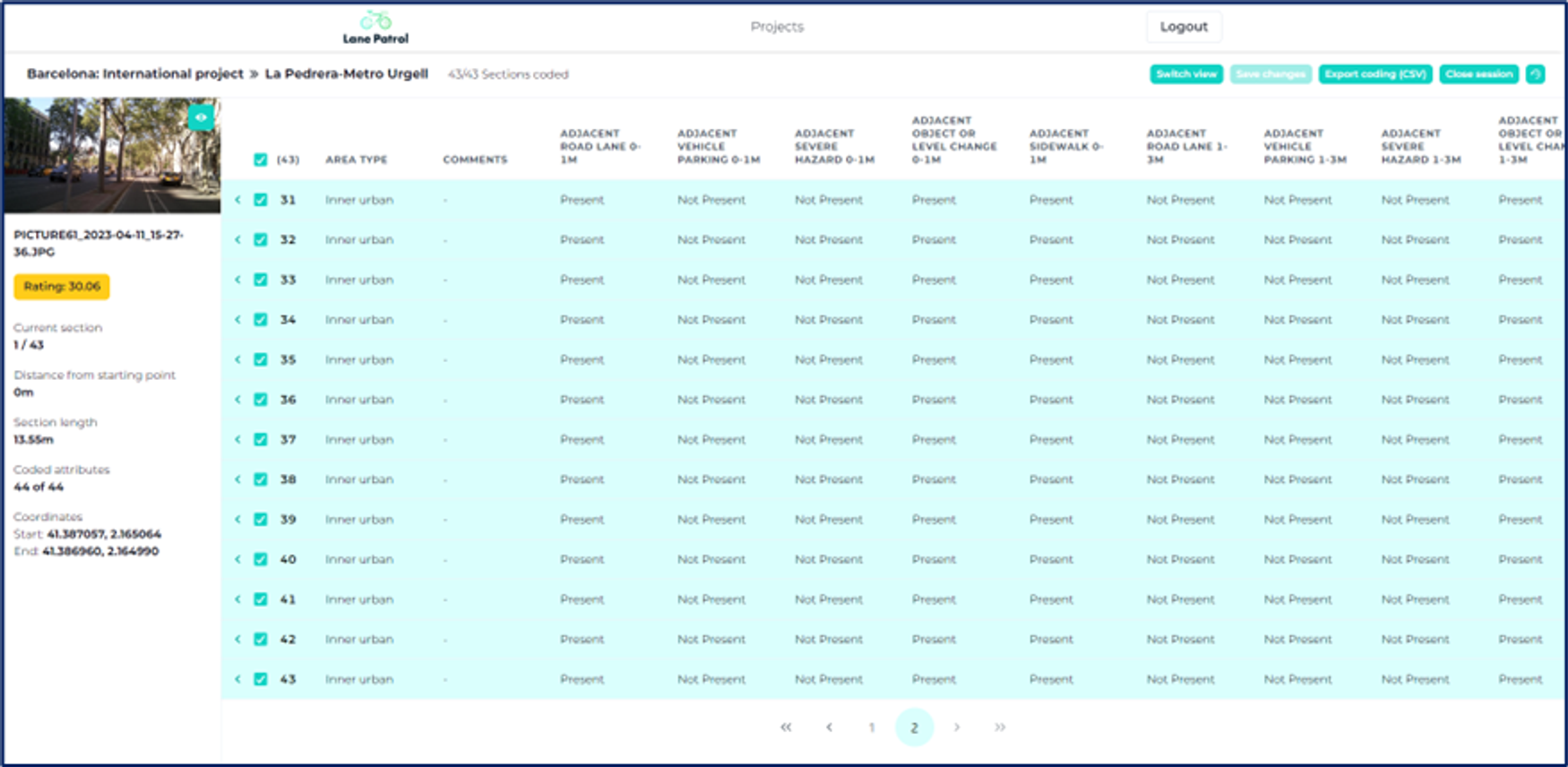
Following the CycleRAP methodology, the Safety Treatment Model was implemented automatically to analyse potential improvements for each section of the infrastructure accroding to its own features and characteristics. The model contains 25 different treatments which are grouped into 4 groups. These are:
- Implementation or modification of the type of infrastructure
- Infrastructure improvements
- Designing safer intersections for cyclists
- Cyclist-friendly roads
From the whole number of sections (3569) or segments of the assessed infrastructure, only 65% (2337) received at least one suggestion for a treatment. The following chart shows the number of times a treatment was suggested for a section on this project. Improve delineation and Upgrade existing facility to an on-road bicycle lane with safety barrier were the most common suggestions for the metropolitan area of Barcelona.
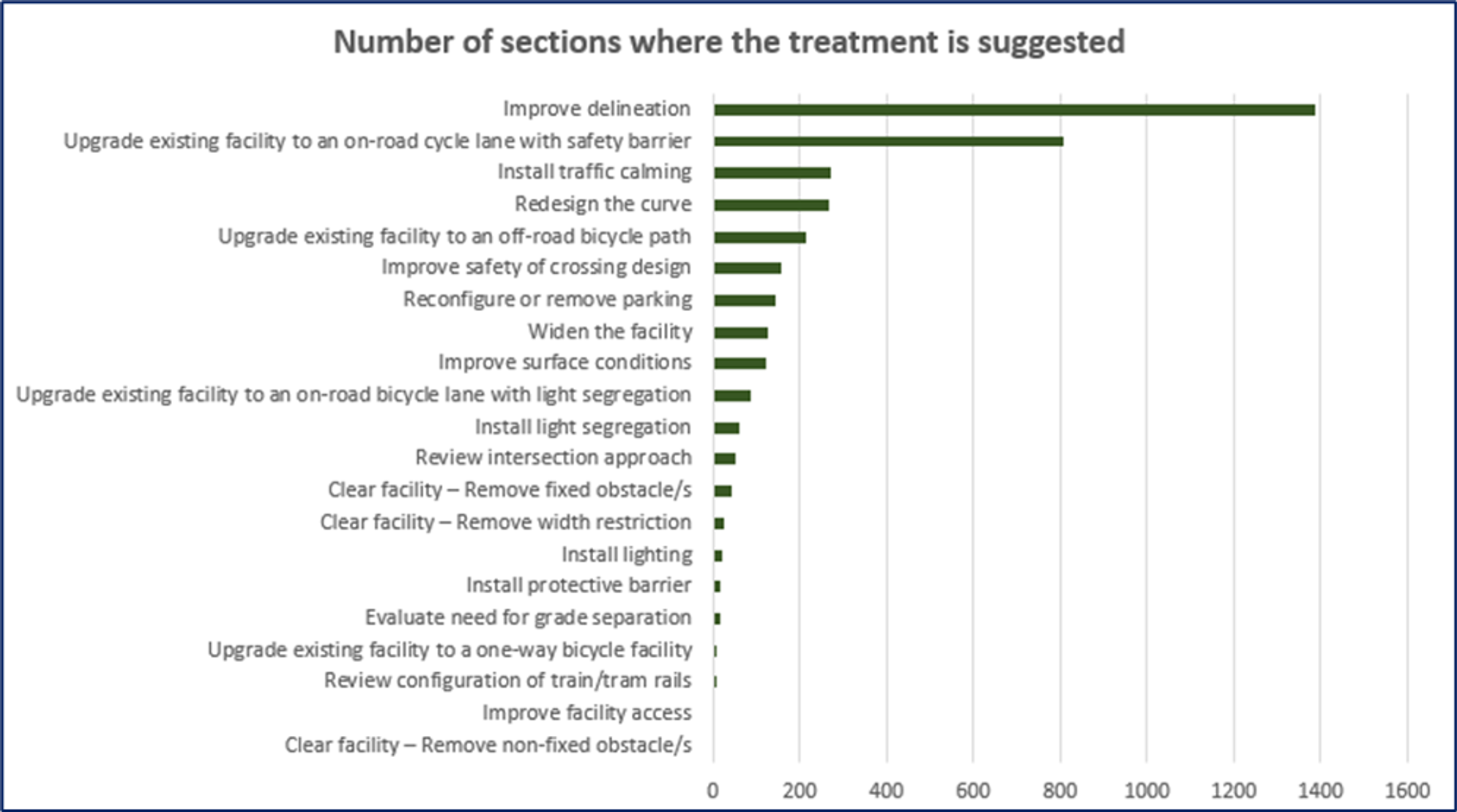
Despite having a higher number of sections where the treatment ‘Improved delineation’ is offered as a countermeasure, implementing the countermesure ‘Upgrade existing facility to an on-road bicycle lane with safety barrier’ shows to be more effective reducing the levels of risk according to the CycleRAP methodology.
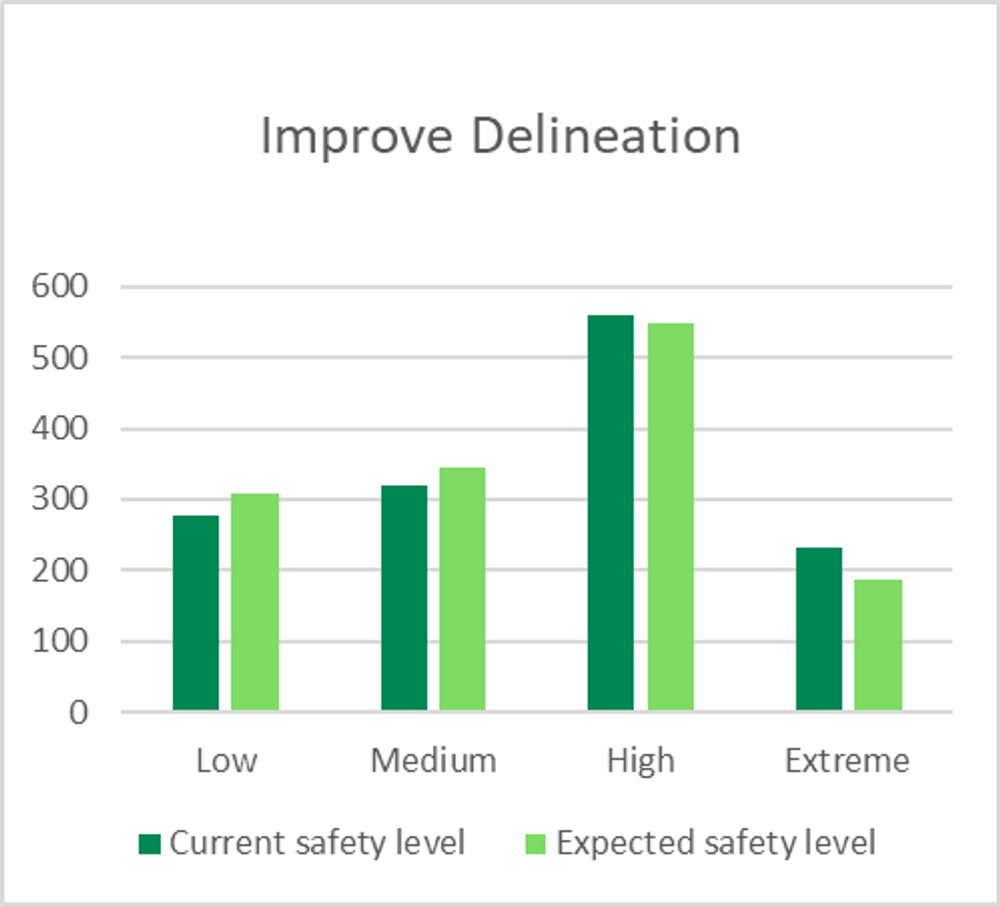
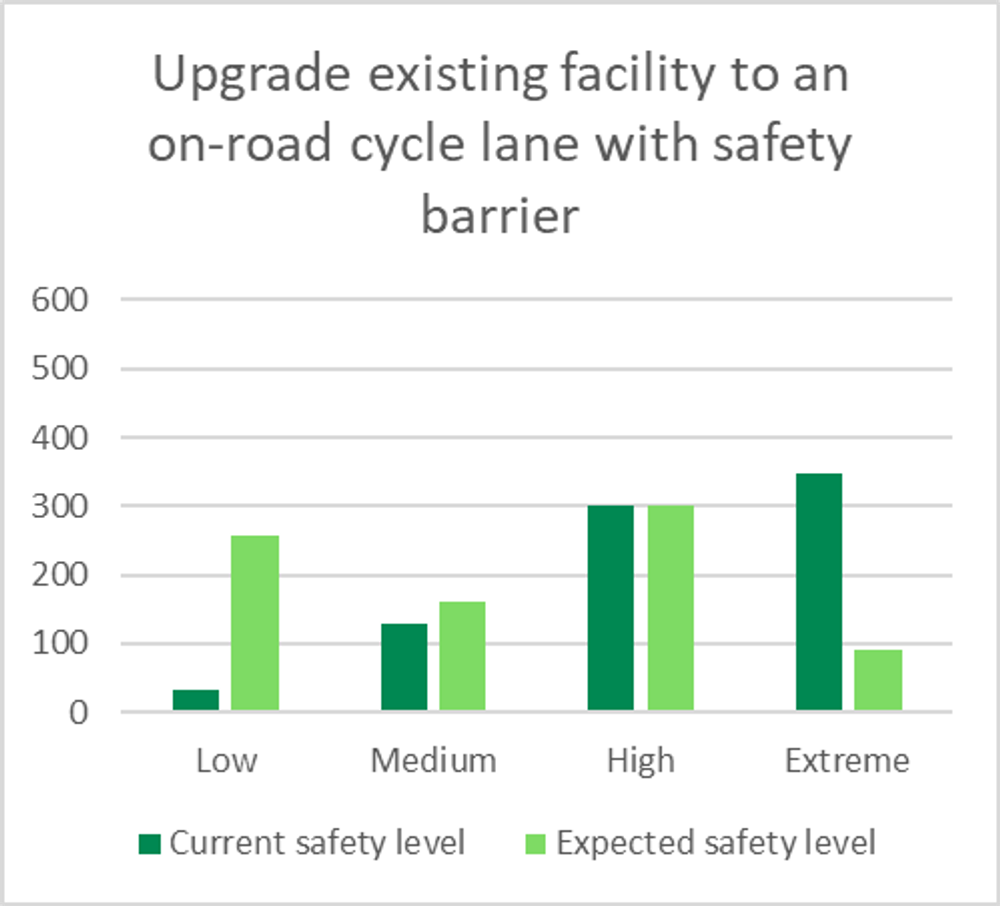
Examples of existing infrastructure improvement in Barcelona
The Barcelona Metropolitan Area has not only increased the number of kms of cycling infrastructure in the last years, but it has also increased the quality, and thus the safety, of the cycling network.
Urban two-way road shoulder lane with sidewalk on one side and has light segregation to an adjacent to a road on the other side. The road has a speed limit of 30km/h.
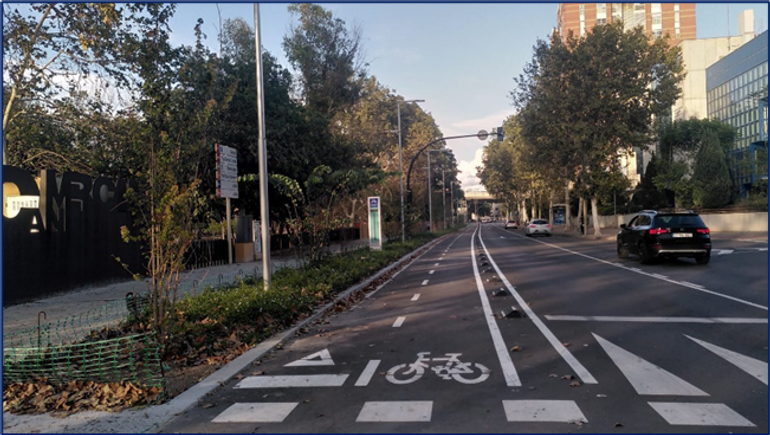

Outer urban two-way off-road cycle lane with light segregation to sidewalk and trees to protect from the road. This typology has clear delineation and the colour of the surface helps differentiate the cycle path.
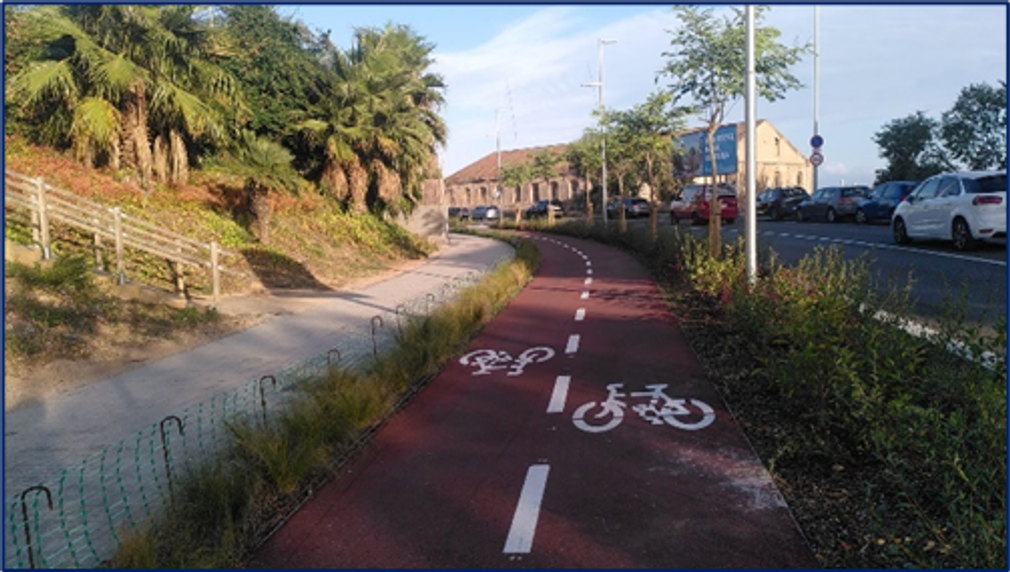
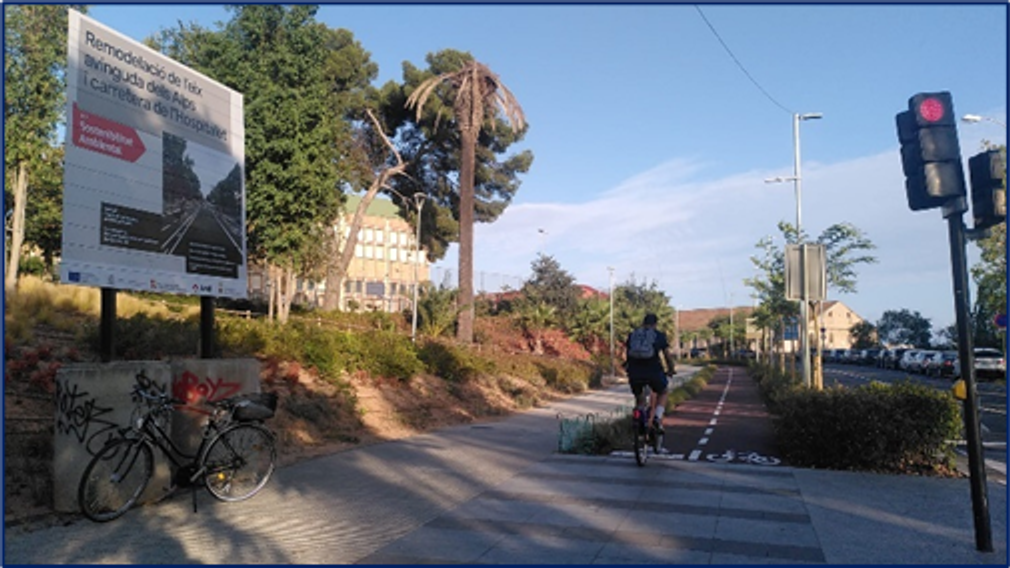
Delineation and segregation between cyclists and vehicles to reduce risks in crossings.
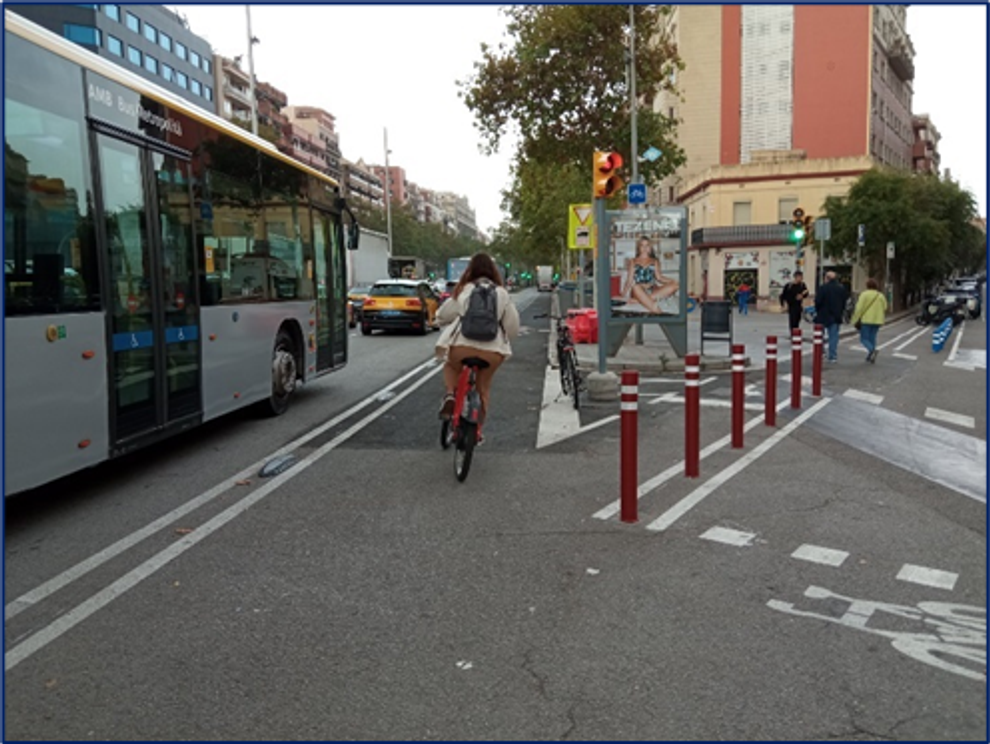
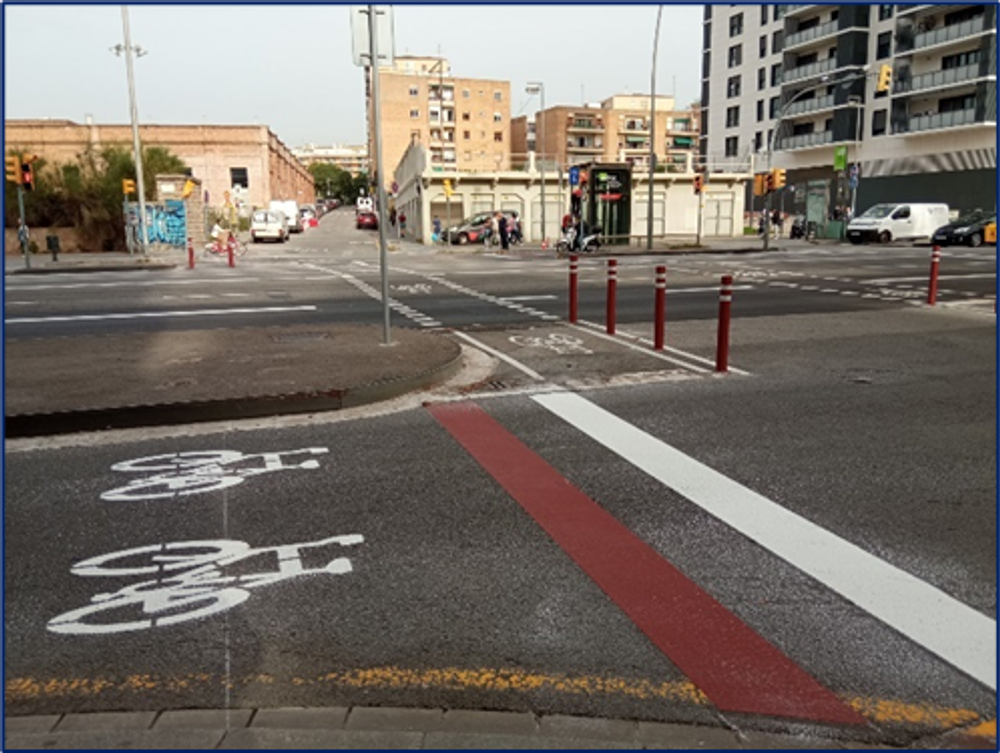
Photos by Barcelona Metropolitan Area (AMB)


